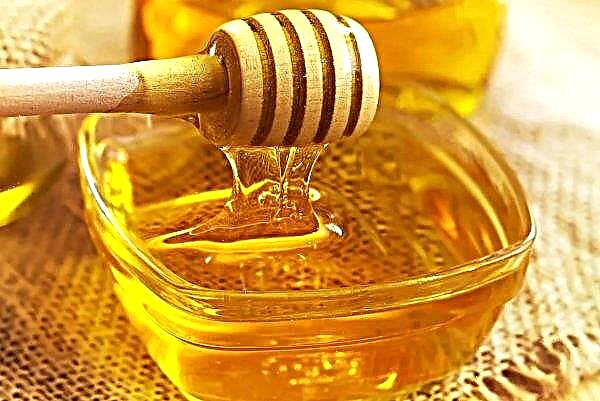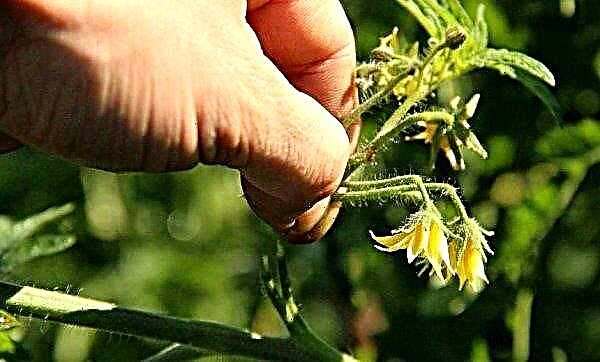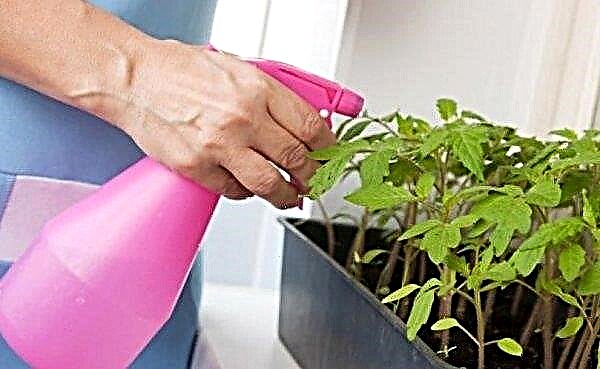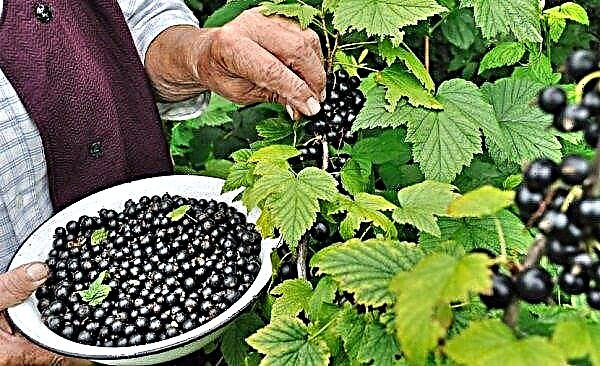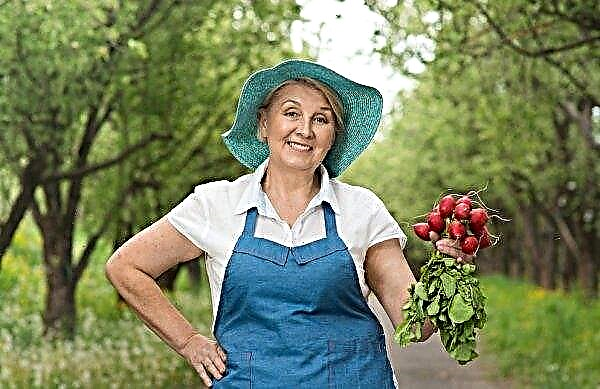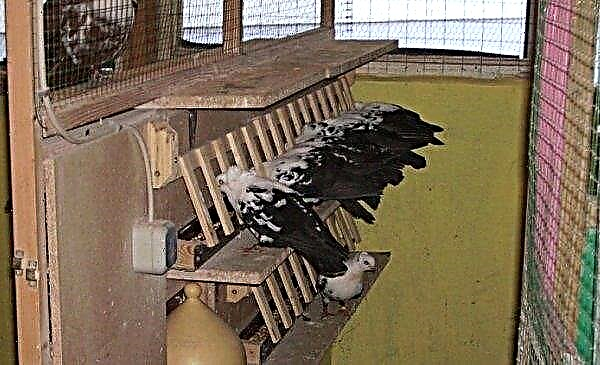Begonias are of two types: bush and tuber. The bush remains green all year round and does not require special conditions in the winter, while the tuber species in winter begins to rest. It is necessary to make efforts to “rest” the plant and gain strength. If the florist provides the flower with proper rest, he will thank him in the summer with abundant flowering. In this article, we will discuss the rules for winter storage of tuber begonia.
Basic rules for keeping tuber begonia in winter
If during flowering the plant released fewer buds and the flowers were chopped, then he did not like the conditions of winter storage. Although there are different ways of wintering begonias, the basic rules are common.
Important! Leaving flower potatoes for the winter in the cellar is not advisable. This room is usually damp and may freeze..
Requirements for winter maintenance of tubers:
- you can not leave them for the winter in the open ground;
- they need to be excavated after the first frosts (October-November);
- the storage room should be dry, cool and ventilated (basement, insulated loggia, a place near the balcony door, space under the bathroom);
- storage temperature - 5–15 ° С;
- you can not store together nodules of different sizes, adults and first-year children;
- dug tubers are stored in a special substrate (peat, sand, vermiculite, sawdust);
- wooden containers, cardboard boxes, plastic containers, flower pots are used as wintering containers;
- tubers winter 3 or 4 months, until the end of winter.

Preparing for the winter
Prepare flowers for winter sleep should be long before it begins.
Preparation includes the following steps:
- If in October the bush releases new buds, they should be removed. So the plant will not spend its energy on new flowers - they will go into the root crop.
- Feeding stops about a month before digging.
- At the first weak frosts, the plant will not be affected, but they will be a signal that it is time to bring begonia into the house. By this time, the leaves should turn yellow, and the stem should wither. Some gardeners, not waiting for frosts, bring bushes from the street when the temperature drops to +10 ° C.
- A potted begonia is simply brought into a room where it is dry and cool, stopping watering. A bush growing on a flower bed should be dug up together with a land lump and brought into the house. In about 14 days, the nodules will stretch out everything useful from the stems and gain strength for rest.
- The stalks are cut, leaving stumps 1-2 cm high from them. Potatoes are peeled from the ground, they are left for 1-2 weeks to dry.
- For bookmarking in a box, you need to select only healthy and beautiful tubers (not too dry, dense, without mold and rot).
Indoor begonias in pots are prepared for winter with a gradual decrease in watering until it is completely stopped. Then the wilted stems are trimmed at ground level. Digging the root crop is not necessary.
Did you know? You can eat the tubers of this beautiful flower. They have a citrus flavor.
How to keep tuber begonia in winter at home
Of several methods for storing tubers, each grower can choose the most suitable in his circumstances. In this case, the following factors should be taken into account:
In this case, the following factors should be taken into account:
- flower age is 1 year or more;
- where it grows - in open ground or in a pot;
- where it will be stored - in a private house or in an apartment.
Let us consider in more detail the ways of wintering begonia tubers.
Dormant care
Looking after begonias in winter is not difficult.
Features of care depend on the method of storage:
- Large tubers of adult flowers (over a year old), peeled and dried, are most often stored in boxes and boxes. They are carefully placed in these containers, carefully pouring with a prepared substrate, which may include peat, vermiculite and sand. Root crops can be folded into several tiers. The main thing is that they are well sprinkled with peat and not in contact with each other. A drawer so equipped is put in a dry, dark and cool place: a cellar or an unheated room. The optimum storage temperature is +10 ° C. To preserve plants in the apartment, you need to find the coldest place: a niche near the balcony door, a loggia, if it does not freeze, an empty space under the bathroom. Watering at this time is contraindicated. From time to time it is necessary to inspect the root crops to check their condition. If rot or mold is detected, the diseased specimen should be removed so as not to infect the “neighbors”.
- A small number of nodules, especially small ones, can be well preserved in the refrigerator. Before that, they are put in a plastic bag with dry peat or sawdust and tied. In the package, you should first make holes for ventilation. This package is placed in the refrigerator in a box for vegetables. Some people think that it is better to use paper, such as a newspaper, instead of polyethylene in a refrigerator. In addition, each potato is packed separately and is not sprinkled with anything. Then paper packages are placed on the bottom shelf of the refrigerator. So winters tubers of young begonias, which are less than a year old.
- Begonias that have grown from seeds in the first year do not drop leaves and do not need winter rest. The flower grower's task is to protect them from the cold and frost, so they are dug out from the flowerbed along with the ground and transplanted into flower containers or pots. They need a bright, but relatively cool place. Air temperature should not be lower than 10 ° С and not higher than 15 ° С. A window sill is ideal, under which there is no device for heating a room. Watering should be reduced to 1 time in 2 or 3 weeks. It is not watered abundantly and not under the root so that its decay does not occur.
- Potted home begonias require even less attention. In late autumn, the number of irrigations is reduced to their complete cessation. When the aboveground part fades, it should be cut off completely. The tuber does not dig out, but remains in the soil. The pot is placed under the bathroom or near the balcony. You can occasionally pour a little when the soil dries up and lags behind the pot.
 Using one of these methods, you can save flowers until spring.
Using one of these methods, you can save flowers until spring.Tuber Awakening
In early spring, flowers wake up: buds on tubers (now timely) testify to this. They need help to germinate and give more water and light. Germination requires a new substrate (peat with humus and sand) and the same box.
Root crops are located at a distance from each other so that they are not crowded. Now they are not completely immersed in the ground, but only half - while their hollow side remains on top. The earth is moistened, and the air temperature can be raised to 18 ° C.
Germination can last several weeks, it occurs unevenly, so you can use growth accelerators - begonia responds well to them. It is also necessary to ensure that there is enough light, but there is no direct sunlight and drafts.
Did you know? Begonia seeds are very small: from a handful of 30 g can grow about 3 million bushes.
Features after winter care
Transplanting into a pot is possible after the appearance of the first leaves. There must be drainage at the bottom of the tank; expanded clay can be used. Plants sit down so that the base of the stems is covered with soil, and on top you need to sprinkle with ash and humus.
Before planting on a flower bed, it is recommended to conduct hardening. Only when there is no longer the threat of frost and stable heat is established on the street, can seedlings be planted in open ground. The soil should first be loosened, mixed with sand, you can add drainage. Tubers, depending on size, plant at a suitable distance from each other. Above the ground should be covered with ash and humus. Watering should be sufficient, but stagnation of water should be avoided.
Tubers, depending on size, plant at a suitable distance from each other. Above the ground should be covered with ash and humus. Watering should be sufficient, but stagnation of water should be avoided.
Tubers that winter in pots need to be transplanted, that is, exchange the old substrate in the pot for a new one. Updated flowers need to be put on a bright windowsill and restart watering, and with the onset of warm weather, they can move to the balcony or the street.
Additional tips
Recommendations of experienced gardeners:
- In no case should you still pick green leaves from the plant. When the stem along with the leaves fade, it gives the root crop the necessary nutrients. That, in turn, feeds, increases in volume and is gaining strength for the winter. But the tuber will not have such an opportunity if “live” leaves are removed from the plant.
- If due to heating in the room where the flower hibernates, the air dries up, you can use a spray bottle with water to moisten the area around the flower.
- If sprouts appear on root crops before spring, they should be broken off.
- Sprouts hatching ahead of time are a sign that the room temperature is too high. This means that the box with planting material should be moved to a cooler room or transferred to the refrigerator.
- Sprouts that appear on nodules stored in the refrigerator indicate high humidity. Root crops need to be sorted out, dried and wrapped with dry paper.
 Tuberous begonias can be called moody: they are very demanding on conditions of winter dormancy.
Tuberous begonias can be called moody: they are very demanding on conditions of winter dormancy.Important! Potted begonias must be transplanted into the new land, as pathogenic bacteria could have settled in the old one.
But lush lush flowering in the summer is a worthy reward for the time spent in winter.

